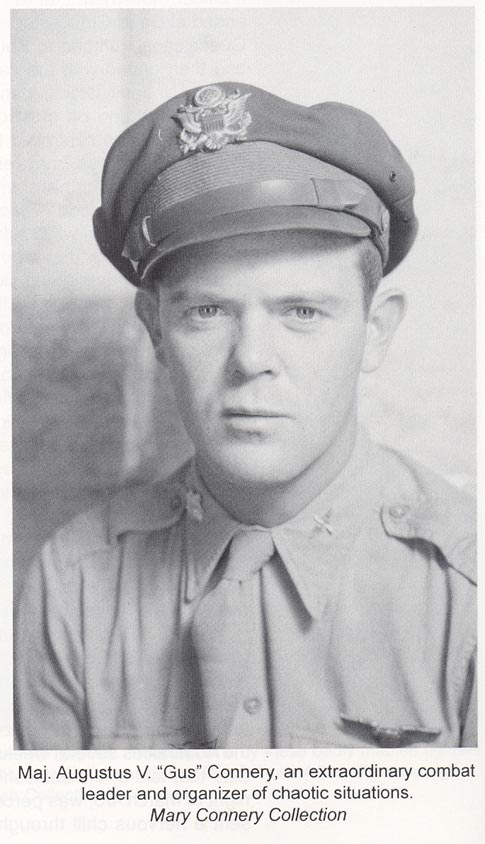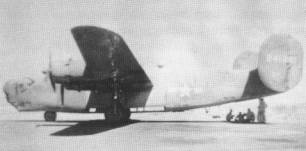380th Bomb Group Association
Newsletter 39 ~ Summer 2009
|
380th Bomb Group Association Newsletter 39 ~ Summer 2009 |
DREAM TIME - A WAR STORY
INSTALLMENT #9
by Roger W. Caputo
This is a story of one person's experience in World War II and the title grows out of the time served on the Continent of Australia (the term "Dream Time" is borrowed from the Australian Aborigine use of the term to describe the distant past of mankind). The writing was done because of the urgings of one family member and was completed in 1995. No claim is made that the story is one of a kind or especially unique, no more than each of us is some different from the other. Reproduced here by permission of the author.
Because of the length of the manuscript, we will tell Roger's story in various installments, in succeeding issues of THE FLYING CIRCUS Quarterly, as page space permits.
Roger Caputo was an NCO who was assigned to Group Headquarters, Administrative Section, in Intelligence.
While the 380th was ranging far and wide over the Dutch East Indies, it would be called upon to interrupt those activities from time to time and join other units in New Guinea to pound the enemy in the Bismarck Archipelago and along the North Coast of New Guinea. MacArthur's strategy was to neutralize the Japanese strongholds and then make big hops along the way back to the Philippines. The first major naval battle was in the Coral Sea, just south of Solomon Islands. The result was a draw, but it had the effect of stopping the Japanese advance any further toward the Southeast. The next big battle was for Guadalcanal in the Solomon Islands. This involved land, sea, and air forces. Next the Allied forces started the drive Northwest along the coast of New Guinea. In the meantime, the strong Japanese base at Rabaul, in the Bismarck Archipelago, was attacked repeatedly by Navy and Army air forces to keep it neutralized. [See note (1) at end of this article]
This entire area could be looked at as one group of islands, but the history of European influence varied. The British had the Solomons since 1893 as a protectorate; the Germans had the Bismarck Archipelago up until the end of WWI, then lost it to the Australians; and New Guinea was Australian for the Eastern half and the Dutch for the Western half.
When the 380th went to New Guinea, it was for relatively short periods of 10 days or less and then only two squadrons or small groups of airplanes, taking minimum ground support personnel along. Everyone and airplanes that did return to Fenton, in Australia, were exhausted and the equipment would be in deplorable condition. There were some one-of-a-kind happenings in the New Guinea operations. It was common practice for bombers to take off individually, and then join up in formation for the run to the target. Often this was done early in the morning just before first light and visibility would be poor. One of our bombers was being joined by another and the joinee got too close! The first had to roll into a steep turn to avoid a collision and the loaded bomber stalled; rolled on its back; and into a spin from 10,000 feet! With a full load of fuel and the Bombay full of bombs, the 56,000-pound airplane headed for the sea in a 90-degree dive. The pilot worked a miracle; he was able to pull the airplane out of the dive, with little altitude to spare, and wobbled his way back to base and landed safely. The manufacturer of the bombers always kept a technical representative in the field and when he went out to look at the airplane, all he could do was shake his head and say, "I don't believe it." The wings had been bent upward as a result of the excess speed in the vertical dive coupled with the centrifugal forces as the airplane was leveled out. That airplane was scrapped! Some time later the same pilot was to lose his life somewhere on a mission over the Dutch East Indies. [See note (2) at end of story about this incident]
Having the job I did, I did not get to go on any of the New Guinea operations. However, on one occasion a single bomber was making a trip from Fenton to the North Coast of New Guinea; it was to be only a 3-day trip and I begged a ride just for the experience, and what an experience it was! The ride was 1,100 miles one way and it crossed the jungle-covered Stanley Mountains, the backbone of New Guinea. Crossing the mountains, I staked out the best seat in the house, in the glass nose, lying flat down on my belly, looking straight down at the scenery from 15,000 feet. What a view and how thin the air was. With no oxygen, breathing was laborious. The pilot was Major Connery, then the Group Operations Officer, and what a daring young Irishman he was. He survived the war and had a career flying for the FAA. The Major was the only pilot I have ever seen who handled the big 4-engine B-24 as though it was a fighter. To watch him bring one into land using the classic "carrier approach" was a thing of beauty; rolling the wings level just coming out of a 180-degree turn as the landing gear kissed the runway. He always had a grin on his face!
As the MacArthur campaign worked its way northwestward along the New Guinea coast, the Japanese responded by funneling more and more of their aircraft into Dutch New Guinea; they built more and more airbases; and the 380th was called upon to hit them from its base in Northern Australia. The round-trip missions were on the order of 1,500 miles, no simple thing like walking across the street. The intensity of the air war over Dutch New Guinea began to approach the intensity of that over Europe. On one occasion there were as many as 35 Japanese fighters swarming around a formation of bombers. We suffered loss; not always an airplane, but as many as 7 out of a crew of 10 were either killed or wounded from fighter attacks.
Badly damaged airplanes would struggle for the 750 to 800 miles back to base on three, or sometimes two, engines, only to lose it all on the final approach to landing with an airplane which was only minimally controllable. They would crash and burn a couple hundred yards from home and safety! It was a heartbreaking thing to experience and then some of us would have to go out to the crash site, after the fire cooled, and poke around for the remains of the bodies. I shall never forget on one occasion I was helping sort through the mess of a crash and came up on a charred lump, a torso, all that was left from the intense fire fueled by the aviation high octane gasoline. The experience is still very clear in my mind. I don't claim that I still wake up in the middle of the night screaming, but finding the torso defined war for me as nothing else could!
 |
 42-41241 |
More to come!
Notes:
(1) To learn more about the Bismarck Archepelago Campaign (15 December
1943-27 November 1944), read this brochure prepared in the U.S. Army Center of
Military History by Leo Hirrel.
http://www.history.army.mil/brochures/bismarck/bismarck.htm
(2) The incident took place on 26 December 43 during the 380th's deployment for the Cape Gloucester landing. The pilot was Harold Mulhollen and the plane was 42-41241 and had no name. See page 134 of my book ("Best in the Southwest"). Mulhollen was indeed Killed in Action on 8 January 44, shot down over Wowoni island east of Celebes. ... Glenn Horton
(3) Photo of Gus Connery from Glenn Horton's "Best in the Southwest," page 182.
Return to Newsletter #39 Topics page
Last updated: 22 May 2014